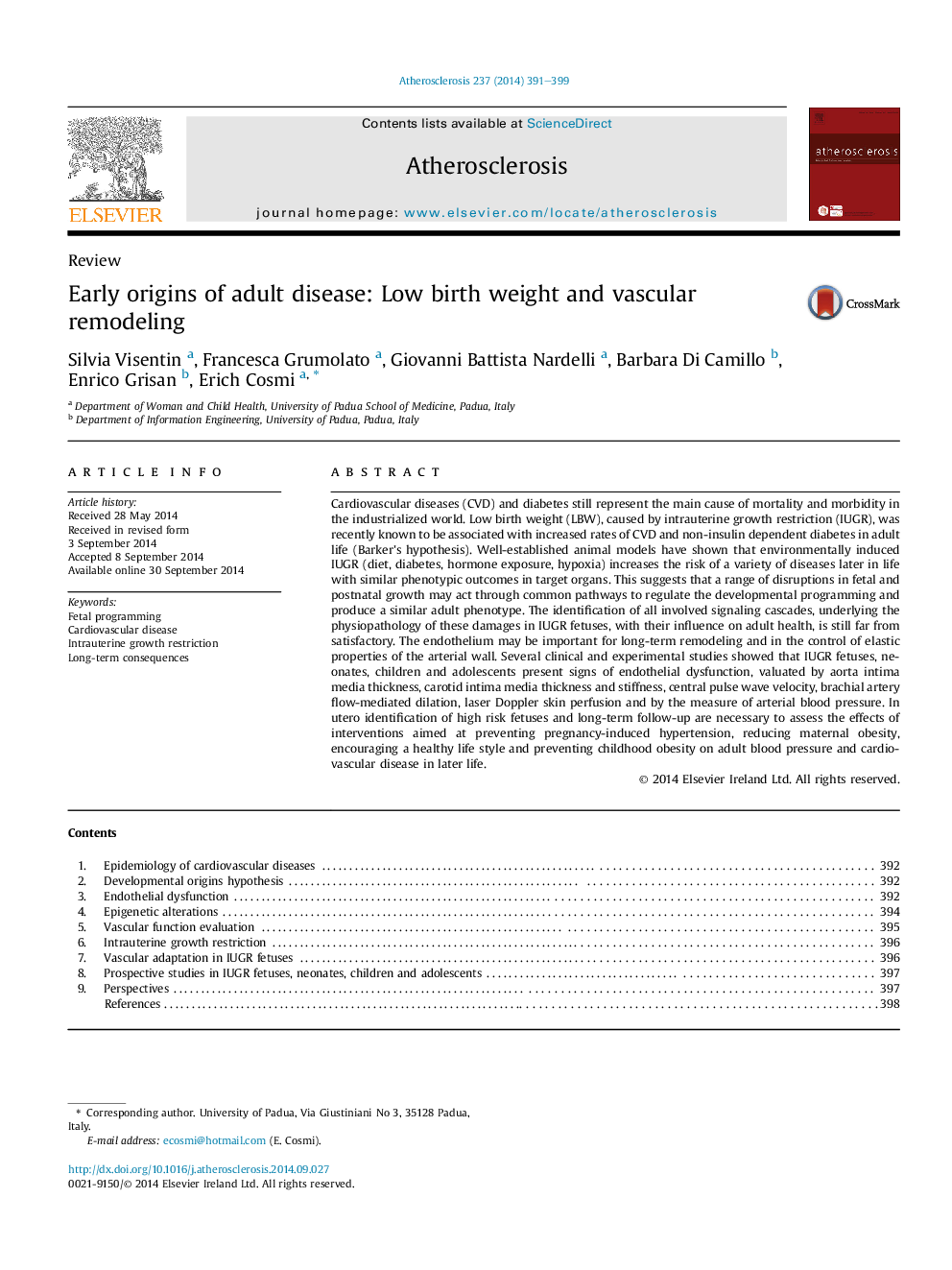| Article ID | Journal | Published Year | Pages | File Type |
|---|---|---|---|---|
| 5945261 | Atherosclerosis | 2014 | 9 Pages |
â¢The present review assess the cardiovascular risk in intrauterine growth restricted fetuses and infants.â¢Attention is paid in pediatric follow-up in infants that were intrauterine growth restricted.
Cardiovascular diseases (CVD) and diabetes still represent the main cause of mortality and morbidity in the industrialized world. Low birth weight (LBW), caused by intrauterine growth restriction (IUGR), was recently known to be associated with increased rates of CVD and non-insulin dependent diabetes in adult life (Barker's hypothesis). Well-established animal models have shown that environmentally induced IUGR (diet, diabetes, hormone exposure, hypoxia) increases the risk of a variety of diseases later in life with similar phenotypic outcomes in target organs. This suggests that a range of disruptions in fetal and postnatal growth may act through common pathways to regulate the developmental programming and produce a similar adult phenotype. The identification of all involved signaling cascades, underlying the physiopathology of these damages in IUGR fetuses, with their influence on adult health, is still far from satisfactory. The endothelium may be important for long-term remodeling and in the control of elastic properties of the arterial wall. Several clinical and experimental studies showed that IUGR fetuses, neonates, children and adolescents present signs of endothelial dysfunction, valuated by aorta intima media thickness, carotid intima media thickness and stiffness, central pulse wave velocity, brachial artery flow-mediated dilation, laser Doppler skin perfusion and by the measure of arterial blood pressure. In utero identification of high risk fetuses and long-term follow-up are necessary to assess the effects of interventions aimed at preventing pregnancy-induced hypertension, reducing maternal obesity, encouraging a healthy life style and preventing childhood obesity on adult blood pressure and cardiovascular disease in later life.
